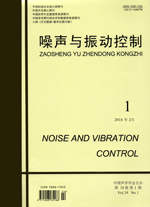The safety and reliability is the key to guarantee normal running for centrifugal pumps, while the vibration is a greatly negative factor. In order to solve the vibration problem, the HG8908C, a vibration data collection system of BEIJING JINGHANG company, was used to monitor the vibration signal on the centrifugal pump. By the vibration failures diagnosis methods, the vibration signal characteristic of amplitude domain, frequency domain and time domain were analyzed in detail and the fault patters generated were figured out. Based on the analytic outcome, controlling the install center for rotor, amplifying the radial-clearance and others solutions, were carried out. The tests results showed that the ways have a positive effect on it, and the pump could work longer hours in a good state. Besides, the vibration failures diagnosis methods were noticeable for solving the vibration problems on centrifugal pumps, and which is valuable for other similar situations.

